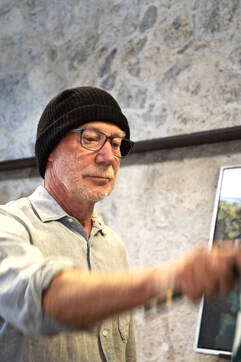Richard Trumbull

Richard Trumbull is an American artist, born in the Midwest and living in San Diego, California and San Miguel de Allende. He is best known for his portraiture and abstracted landscapes which have been shown internationally. In Mexico, Trumbull is currently represented by the prestigious Zoho Gallery in San Miguel de Allende. For sales inquiries contact www.zohogallery.com